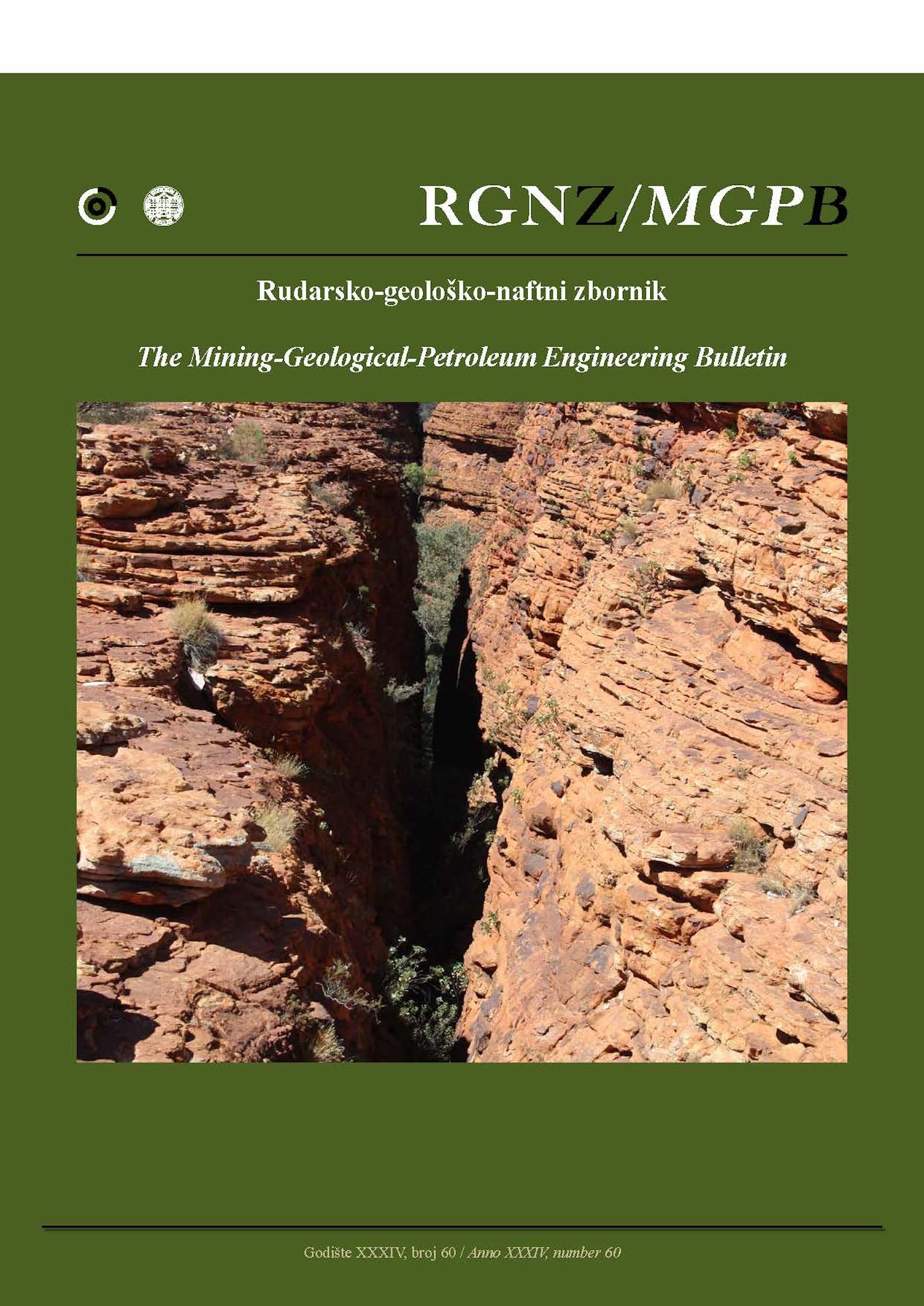Quantitative Risk Assessment of the Effect of Sand on Multiphase Flow in Pipeline
DOI:
https://doi.org/10.17794/rgn.2022.4.4Keywords:
average particle diameter, critical sand concentration, sanding up, erosion, abnormal pressure gradient, Monte Carlo simulationAbstract
The presence of sand particles flowing along with reservoir fluids in a pipeline increases the probability of pipeline failure. The risk of pipeline failure is either accentuated or abated by the flow conditions of the fluids in the pipeline. In this study, a quantitative risk analysis of the effect of sand on pipelines during multiphase flow, under the pipeline failure modes; sanding up, erosion, and encountering abnormal pressure gradient was conducted. Three piping components were considered: line pipe (nominal size 1.5 in [3.8 cm]), swing check valve (nominal size 12.007 in [ 30.5cm]) and 90 deg LR Elbow (nominal size 2.25 in [5.7cm]). Correlations that indicate the critical velocities and the critical sand concentrations above/below which these failures occur were employed and implemented in a Visual Basic program. The analysis was conducted at a temperature of 204 oC and pressure of 604 psi [4.2×106 Pa]. A probability distribution, simulating real-life scenario was developed using Monte Carlo simulation. This determines the probability of deriving critical sand concentration values that fall beyond the set statistical limits which indicates the probability of occurrence of the failure being investigated. For all three failures, the severity of occurrence (represented by CAPEX incurred in solving the failures) was multiplied with the probability of failure which gave rise to the risk indexes. Based on the histogram plot of average risk index and analysis, the study reveals that larger diameter components are prone to turbulence which lead to greater risk of erosion. The risk of abnormal pressure drop and sanding up were considerably lower than that for erosion (abrasion)..
Downloads
Published
How to Cite
Issue
Section
License
Copyright (c) 2022 authors and journal

This work is licensed under a Creative Commons Attribution 4.0 International License.
Creative Commons-BY
Authors who publish with this journal agree to the following terms:
In agreeing this form, you certify that:
- You read the ethical codex of the RGN zbornik available at journal web.
- You submitted work is your original work, and has not previously been published and does not include any form of plagiarism.
- You own copyright in the submitted work, and are therefore permitted to assign the licence to publish to RGN zbornik.
- Your submitted work contains no violation of any existing copyright or other third party right or any material of an obscene, libellous or otherwise unlawful nature.
- You have obtained permission for and acknowledged the source of any illustrations, diagrams or other material included in the work of which you are not the copyright owner.
- You have taken due care to ensure the accuracy of the work, and that, to the best of your knowledge, there are no false statements made within it.
- All co-authors of this submitted work are aware of, and in agreement with, the terms of this licence and that the submitted manuscript has been approved by these authors.
Publication licence
You retain copyright in your submitted work, according to journal license policy (CC-BY). By signing this form you agree that RGN zbornik may publish it under the publication licence. In summary the licence allows the following:
Anyone is free:
- To copy, distribute, display, and perform the work.
- To make derivative works.
Under the following conditions:
- The original author must always be given credit.
- The work may not be used for commercial purposes.
- If the work is altered, transformed, or built upon, the resulting work may only be distributed under a licence identical to this one.
Exceptions to the licence
In addition to publishing the work printed under the above licence, RGN zbornik will also enable the work to be visible online.
The journal editorial can change the licence rules anytime but it cannot retroactively restrict author(s) rights.


